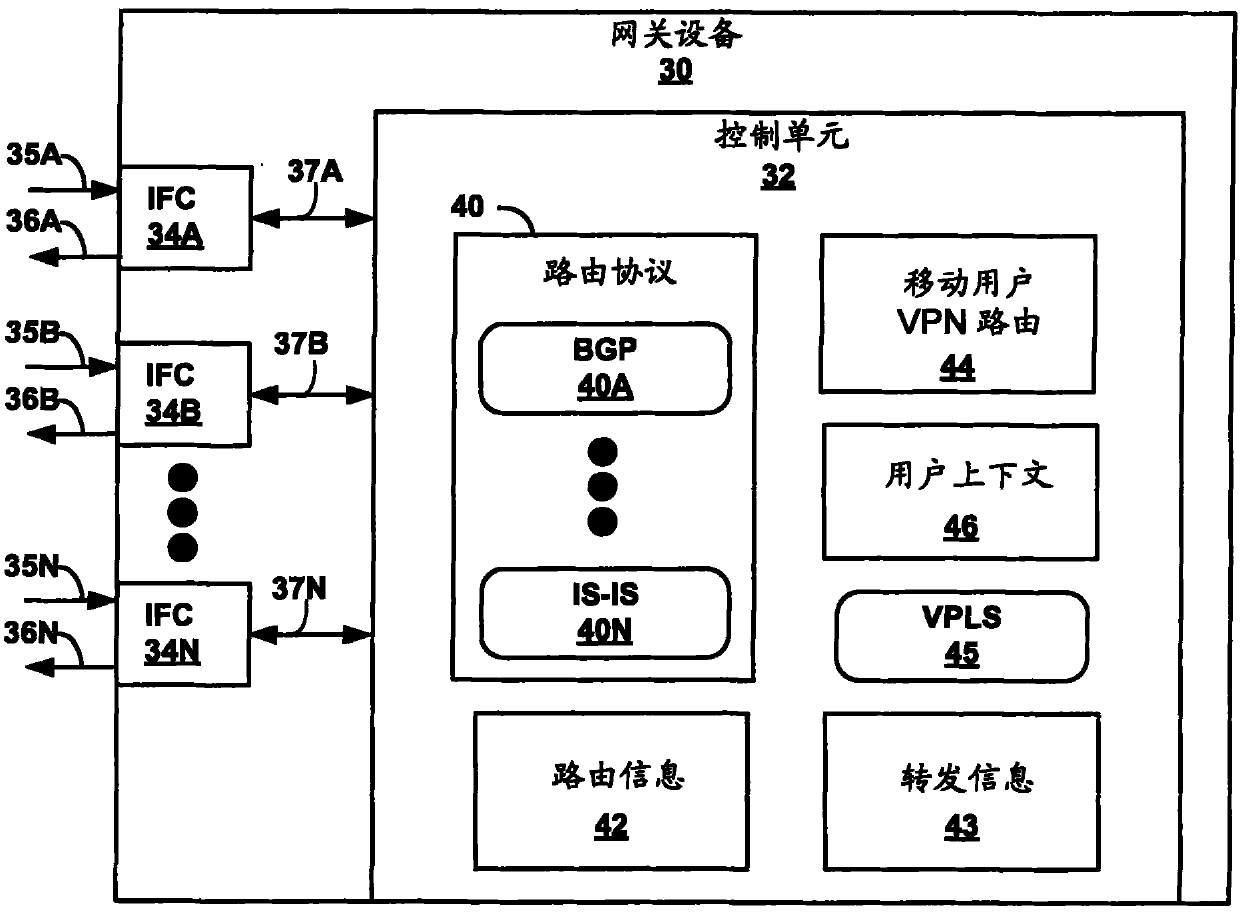Network-based macro mobility in cellular networks using an extended routing protocol
A technology of cellular network and routing, applied in the field of network
- Summary
- Abstract
- Description
- Claims
- Application Information
AI Technical Summary
Problems solved by technology
Method used
Image
Examples
Embodiment Construction
[0079] figure 1 is a block diagram illustrating a system including an exemplary cellular network 10 . Such as figure 1 As shown, cellular network 10 includes gateway devices 12A, 12B (“gateway devices 12 ”) as well as anchor device 16 , base stations 18A-18Z (“base stations 18 ”), and mobile device 20 . exist figure 1 In the example shown, the cellular network 10 is connected to a packet-based public network 22, which may represent, for example, the Internet or any other packet-based public access network or private computer network. Mobile device 20 may also be referred to as a mobile user. Although the cellular network shown for ease of illustration includes only two gateway devices 12, an anchor device 16, and a mobile device 20, the cellular network 10 may include multiple gateway devices and multiple Anchoring the device. Therefore, the present invention should not be limited to figure 1 Exemplary embodiment shown.
[0080] The base station 18 has a wireless connec...
PUM
 Login to View More
Login to View More Abstract
Description
Claims
Application Information
 Login to View More
Login to View More - R&D
- Intellectual Property
- Life Sciences
- Materials
- Tech Scout
- Unparalleled Data Quality
- Higher Quality Content
- 60% Fewer Hallucinations
Browse by: Latest US Patents, China's latest patents, Technical Efficacy Thesaurus, Application Domain, Technology Topic, Popular Technical Reports.
© 2025 PatSnap. All rights reserved.Legal|Privacy policy|Modern Slavery Act Transparency Statement|Sitemap|About US| Contact US: help@patsnap.com



